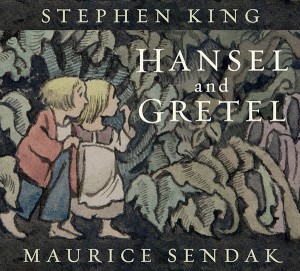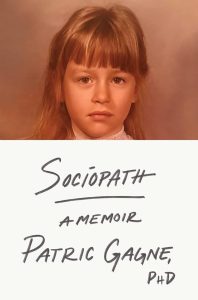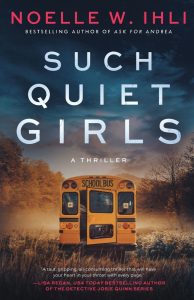
Few fairy tales are as universally known or as haunting as Hansel and Gretel. Over the centuries, countless authors and artists have reimagined the tale of two children abandoned in the forest and lured by a witch’s house of sweets. Now, in an extraordinary collaboration, Stephen King brings his dark narrative touch to the Brothers Grimm classic, accompanied by the legendary illustrations of Maurice Sendak. The result is a picture book that feels both timeless and startlingly fresh.
The Story
This retelling remains faithful to the familiar bones of the story. Hansel and Gretel are betrayed by their parents, left to fend for themselves in the forest, and ultimately forced to outwit a witch who intends to devour them. Yet King layers the text with his trademark psychological unease, leaning into the themes of neglect, abuse, hunger, and survival. While he resists pushing the story into full-blown horror, he sharpens the edges just enough to remind readers that fairy tales were never meant to be gentle.
What distinguishes this version is the interplay between King’s prose and Sendak’s artwork. The illustrations, originally created for Engelbert Humperdinck’s opera Hansel and Gretel, bring a sense of theatrical menace and old-world dread. The witch, cloaked in motherly kindness before revealing her monstrous self, is especially chilling. Combined with King’s economical yet evocative storytelling, the book becomes as much a piece of art as it is a story.
Strengths
For readers who love King’s work, this project is a fascinating detour. He does not reinvent the fairy tale but reframes it, spotlighting the cruelty of the stepmother and the precariousness of childhood in a world where adults fail to protect. Fans of Sendak will delight in seeing his distinctive style once again grace the page, lending texture and atmosphere to one of the most unsettling Grimm tales.
There is also something undeniably powerful about revisiting Hansel and Gretel as adults. The themes of betrayal, scarcity, and resilience resonate differently when viewed through the lens of lived experience. As one reviewer put it, this story of siblings surviving abuse and neglect becomes a way to process darker truths that linger well beyond childhood.
Weaknesses
Not every reader will be satisfied. Some critics expected King to push further into horror territory, perhaps leaning into the original 1812 Grimm version where the children’s biological mother conspires against them. Others felt the ending was too restrained, lacking the grotesque flourish they anticipated from a King retelling. A few even noted that Sendak’s illustrations, drawn for the opera rather than this text, occasionally feel visually detached from King’s narrative.
Final Thoughts
Ultimately, Hansel and Gretel by Stephen King and Maurice Sendak is less about shock value and more about atmosphere. It is a beautifully produced work that respects the bones of the Grimm tale while offering enough darkness to satisfy those looking for something more unsettling than a typical children’s storybook. It will appeal to collectors, fairy tale enthusiasts, and King fans eager to see a different side of his craft.
This is not the definitive horror version of Hansel and Gretel, but it is a haunting, artful edition worth placing on your shelf both for the story and the illustrations that give it life.
Experience it for yourself: Buy on Amazon.


